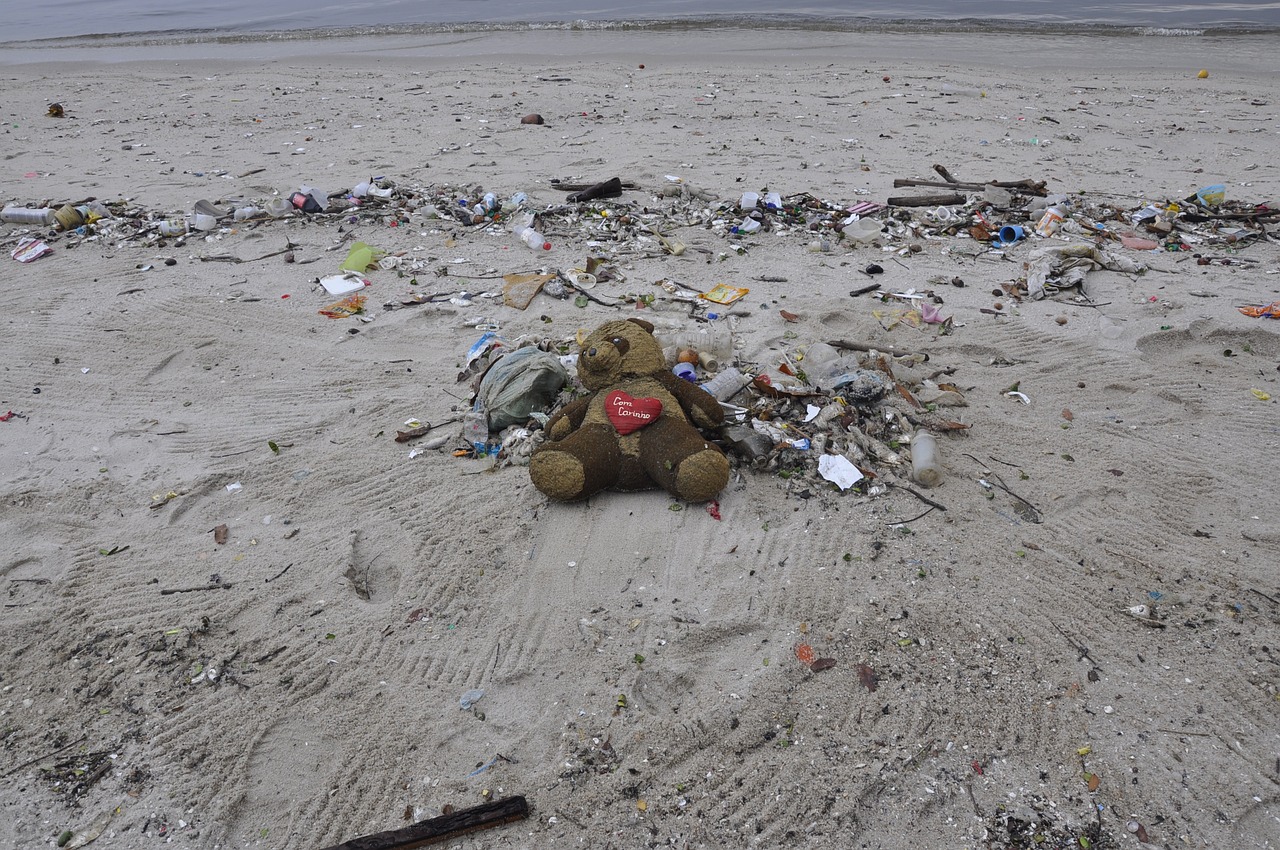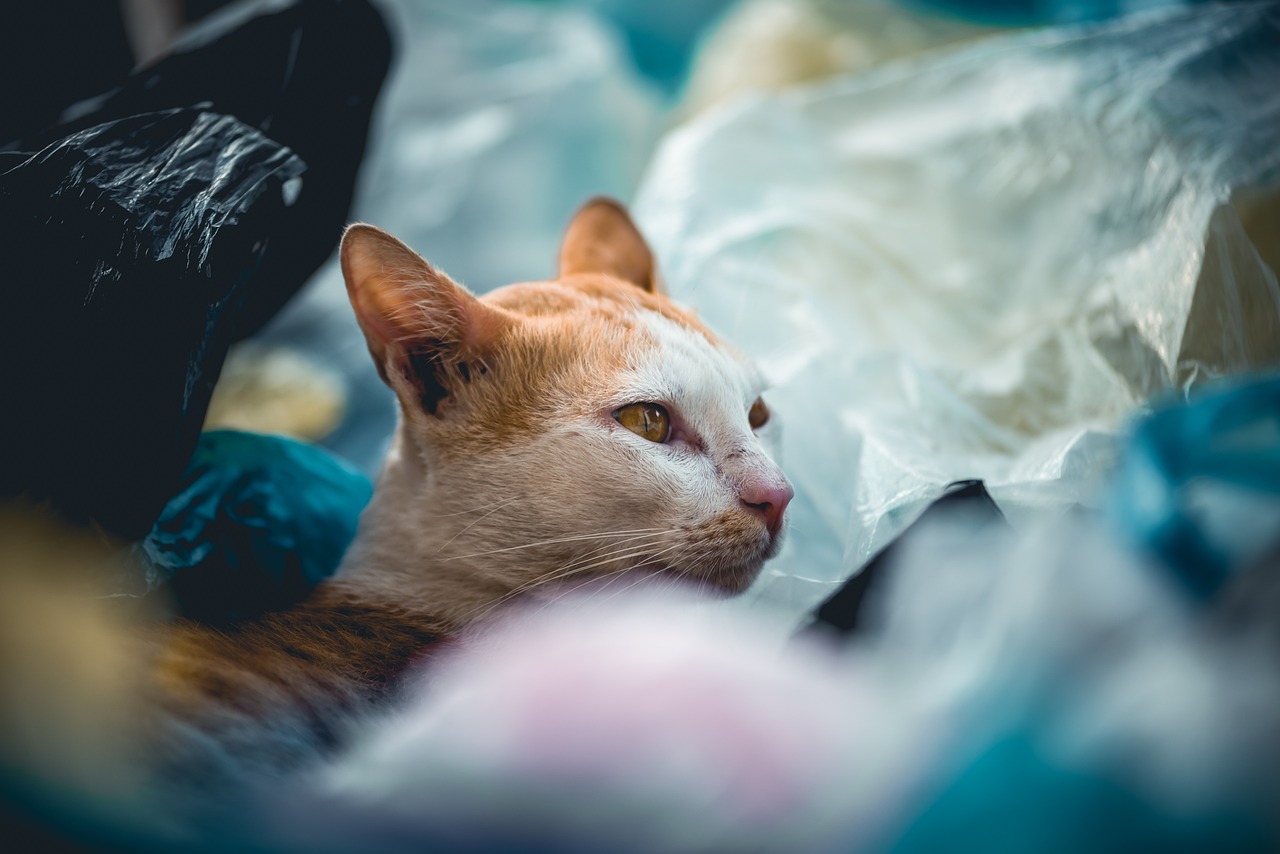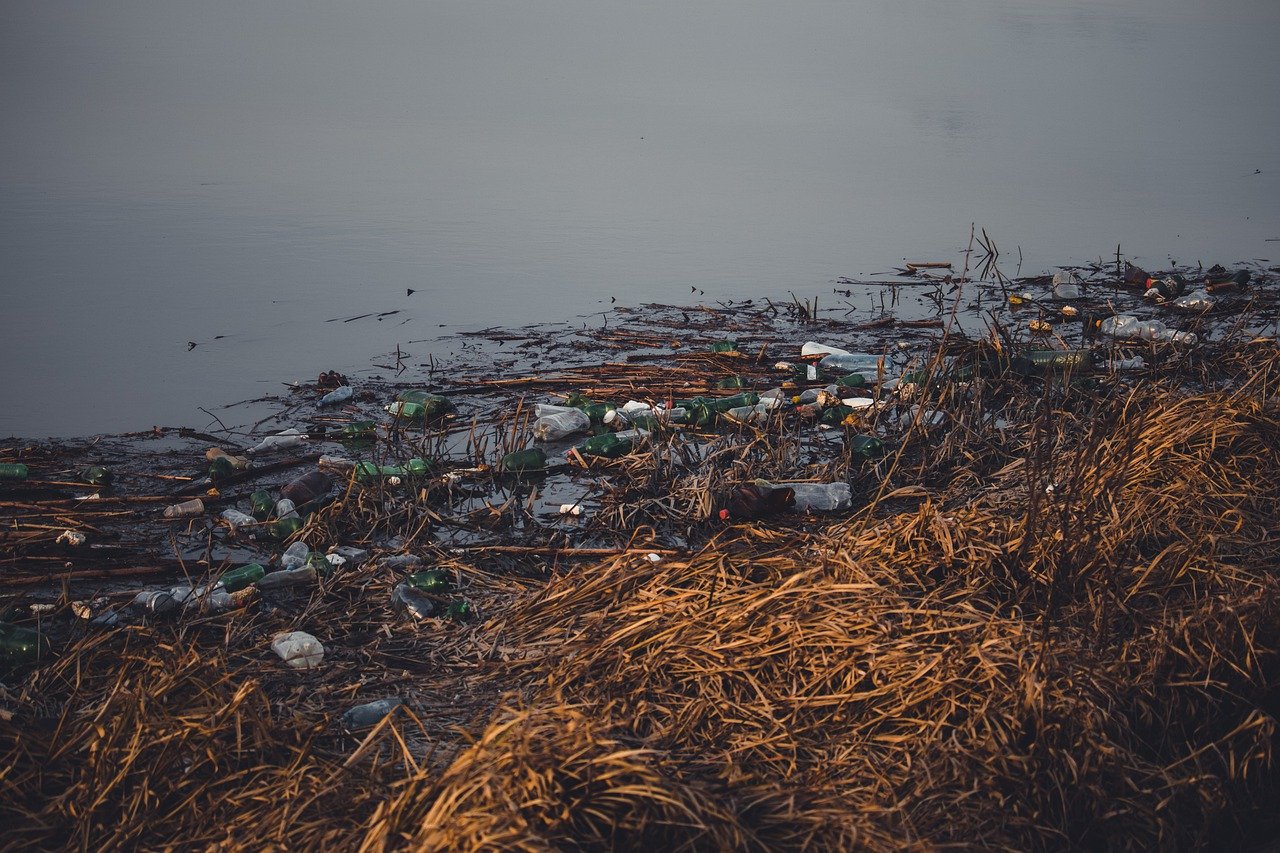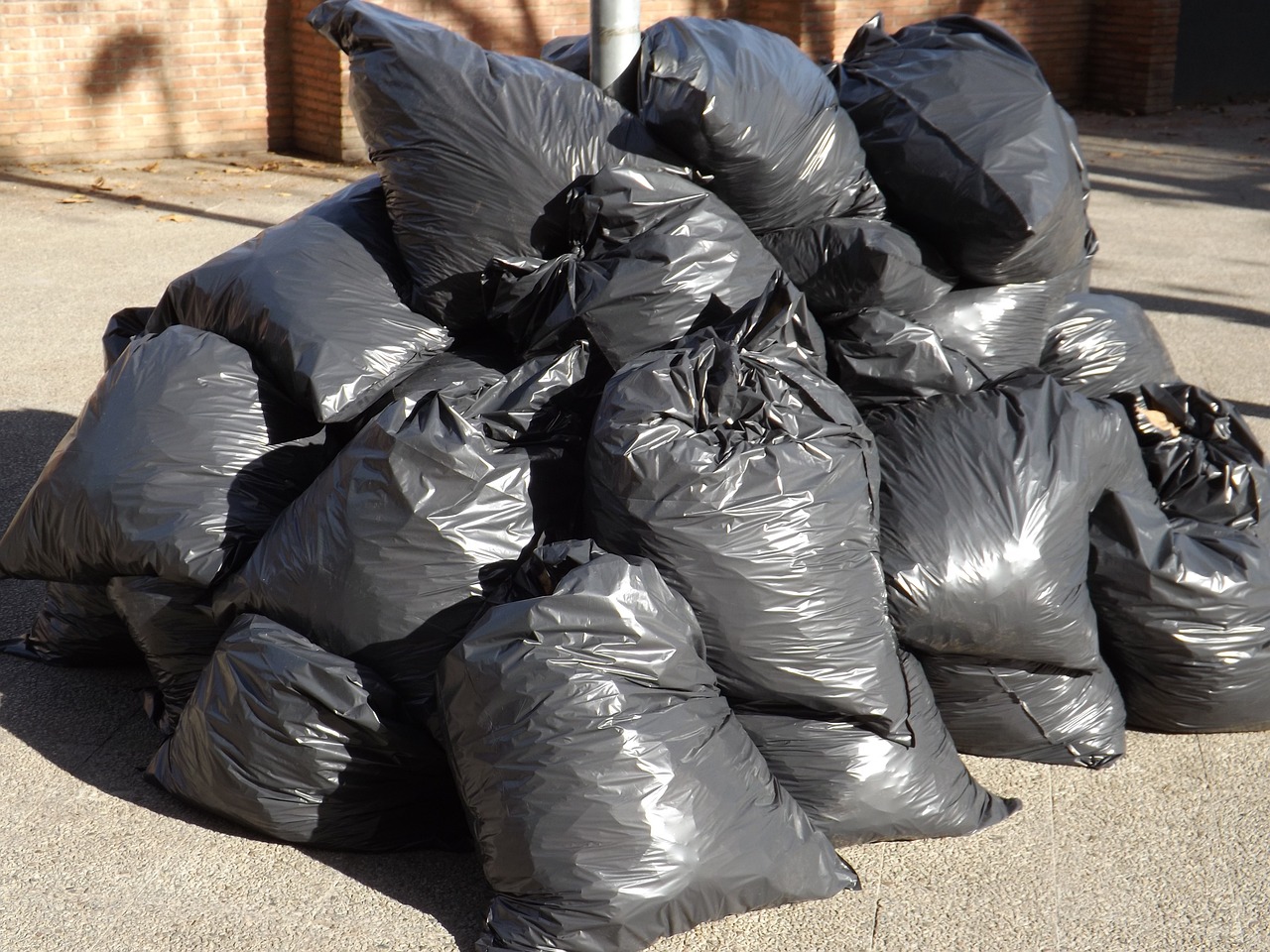The Impact of Single-Use Plastic on Our Ecosystem
This article explores the detrimental effects of single-use plastics on the environment, wildlife, and human health, while also discussing potential solutions and alternatives to mitigate these impacts.
Single-use plastics are items designed for one-time use, contributing significantly to environmental pollution. These ubiquitous products are found in every corner of our lives, from the plastic bags we use at grocery stores to the straws we sip our drinks through. But why are they so prevalent? The convenience they offer is hard to resist. Imagine rushing through your day, grabbing a quick coffee in a disposable cup, or packing a lunch in plastic wrap. It’s quick, it’s easy, and it seems harmless at first glance. However, this convenience comes at a steep price for our planet.
The proliferation of single-use plastics leads to severe environmental degradation. When we toss away a plastic item, it doesn’t just disappear; it lingers in our environment for hundreds of years. These materials affect ecosystems in a myriad of ways. They can break down into smaller pieces known as microplastics, which infiltrate our soil and waterways, affecting plant life and aquatic organisms. Imagine a beautiful beach, littered with plastic debris, where once vibrant marine life thrived. The stark reality is that our careless habits are turning paradise into pollution.
Wildlife is severely threatened by single-use plastics, which can cause injury and death. Animals often mistake plastic for food, leading to dire consequences. For instance, sea turtles are known to ingest plastic bags, believing they are jellyfish. This can lead to malnutrition or even death. Birds, too, are not spared; they often feed plastic to their chicks, resulting in a tragic cycle of suffering. The broader implications for biodiversity are staggering, as the loss of species can disrupt entire ecosystems. When one species disappears, it can trigger a domino effect, impacting countless others.
Single-use plastics pose significant health risks to humans through chemical leaching and microplastic ingestion. When plastics break down, they can release harmful chemicals that infiltrate our food and water supply. Imagine biting into a fish that has consumed microplastics, unknowingly putting your health at risk. The potential health impacts are alarming, and it’s crucial for us to raise awareness about these dangers. By understanding the risks, we can make informed choices that protect not only our environment but our health as well.
Understanding the scale of plastic pollution is crucial for addressing the issue. Here are some key statistics that illustrate the extent of single-use plastic waste globally:
| Statistic | Value |
|---|---|
| Plastic produced annually | Over 300 million tons |
| Percentage of plastic that is single-use | 50% |
| Plastic waste entering oceans each year | 8 million tons |
These numbers are not just figures; they represent a crisis that is escalating at an alarming rate. Each piece of plastic contributes to a larger problem that affects every living being on this planet.
Many governments are implementing regulations to curb single-use plastics. Policies such as bans on plastic bags and straws are becoming more common. For instance, countries like France and Canada have taken significant steps to reduce plastic waste. However, the effectiveness of these policies can vary. While some regions see a noticeable decrease in plastic use, others struggle to enforce these regulations. It’s a complex issue that requires cooperation from consumers, businesses, and governments alike.
Innovative alternatives to single-use plastics are emerging in various industries. Biodegradable materials, reusable options, and other sustainable practices are gaining traction. For example, companies are now producing biodegradable straws made from plant materials, which decompose much faster than traditional plastic. Additionally, the rise of reusable containers and bags is a testament to changing consumer behavior. By opting for these alternatives, we can significantly reduce our plastic footprint.
Grassroots movements and community initiatives play a vital role in combating plastic pollution. Local beach cleanups and educational campaigns are just a few examples of how communities are coming together to make a difference. These efforts not only help to clear our environment but also raise awareness about the importance of reducing single-use plastic consumption. Individuals can contribute by participating in local initiatives or even starting their own campaigns. Every small action counts!
- What are single-use plastics? Single-use plastics are items designed to be used once and then discarded, such as plastic bags, straws, and cutlery.
- How do single-use plastics affect the environment? They contribute to pollution, harm wildlife, and can take hundreds of years to decompose.
- What can I do to reduce single-use plastic? Opt for reusable items, participate in community cleanups, and support policies aimed at reducing plastic waste.

Understanding Single-Use Plastics
Single-use plastics are ubiquitous in our daily lives, but have you ever stopped to think about what that really means? These are items designed for one-time use and are typically discarded after a brief period. Think about your morning coffee—how often do you grab a plastic cup, lid, and straw, only to toss them in the trash moments later? This convenience comes at a steep price for our environment. The most common types of single-use plastics include plastic bags, straws, cutlery, plates, and food packaging. Each of these items serves a purpose, but their convenience often overshadows the long-term consequences of their usage.
The reasons behind the widespread adoption of single-use plastics are multifaceted. First and foremost, they are inexpensive to produce and purchase, making them an attractive option for both manufacturers and consumers. Additionally, they offer unparalleled convenience, especially in our fast-paced lives where time is of the essence. However, this convenience is a double-edged sword. While single-use plastics make our lives easier, they contribute significantly to the growing problem of plastic pollution.
To truly grasp the impact of single-use plastics, let’s consider the sheer volume of these items produced annually. A staggering amount of plastic is generated each year, with a significant proportion being single-use. According to recent studies, it’s estimated that over 300 million tons of plastic are produced globally each year, and a considerable fraction of that is single-use. This creates a cycle of consumption that is difficult to break. Once discarded, these plastics can take hundreds of years to decompose, leading to accumulation in landfills and oceans.
In order to tackle the single-use plastic crisis, it is essential to understand not just what these plastics are, but also the alternatives available to us. By shifting our perspective and considering reusable or biodegradable options, we can begin to reduce our reliance on these harmful materials. The journey towards a sustainable future starts with awareness and education about the implications of our choices.
As we move forward, we must ask ourselves: Are we willing to sacrifice convenience for the health of our planet? The answer lies in our collective action and commitment to change. By embracing alternatives and reducing our consumption of single-use plastics, we can pave the way for a cleaner, healthier environment for future generations.

The Environmental Consequences
The impact of single-use plastics on our environment is nothing short of catastrophic. These items, designed for a fleeting moment of convenience, linger in our ecosystem for centuries, creating a toxic legacy that affects every corner of our planet. When we toss away a plastic bag or a disposable cup, we often forget that these seemingly insignificant actions contribute to a much larger problem. Single-use plastics break down into microplastics, which infiltrate our soil, waterways, and oceans, posing serious threats to both wildlife and human health.
One of the most alarming consequences of plastic pollution is its effect on marine life. Every year, millions of tons of plastic waste enter the oceans, resulting in devastating impacts on aquatic ecosystems. Sea turtles mistake plastic bags for jellyfish, while birds ingest plastic debris, leading to malnutrition and death. The Great Pacific Garbage Patch, a massive collection of plastic waste in the ocean, serves as a grim reminder of our negligence. It’s estimated that there are over 1.8 trillion pieces of plastic floating in this area alone, and the situation is only worsening.
Furthermore, the environmental consequences of single-use plastics extend beyond marine life. When plastics are discarded improperly, they can end up in landfills, where they take hundreds of years to decompose. During this time, they leach harmful chemicals into the soil and groundwater, affecting the quality of our natural resources. This chemical leaching can contaminate food crops, leading to a ripple effect that ultimately impacts human health.
The statistics surrounding plastic pollution are staggering and highlight the urgent need for action. For instance, a recent study revealed that over 300 million tons of plastic are produced globally each year, with a significant portion being single-use items. To put this into perspective, here’s a table that summarizes the environmental impact of single-use plastics:
| Plastic Item | Average Decomposition Time | Environmental Impact |
|---|---|---|
| Plastic Bags | 10-1,000 years | Injures marine life, clogs waterways |
| Plastic Bottles | 450 years | Leaches chemicals, harms wildlife |
| Styrofoam Containers | Indefinite | Non-biodegradable, contributes to landfill overflow |
The sheer volume of plastic waste generated annually is a wake-up call for all of us. It’s not just an environmental issue; it’s a humanitarian crisis. As plastics continue to accumulate, they disrupt ecosystems and threaten biodiversity. Every time we choose convenience over sustainability, we are making a choice that reverberates through our environment, affecting everything from the smallest microorganisms to the largest mammals.
In conclusion, the environmental consequences of single-use plastics are profound and far-reaching. It’s crucial for individuals, communities, and governments to recognize the gravity of this issue and take decisive action. By reducing our reliance on single-use plastics and advocating for sustainable alternatives, we can begin to heal our planet and ensure a healthier future for generations to come.

Impact on Wildlife
The impact of single-use plastics on wildlife is nothing short of catastrophic. Imagine a world where sea turtles mistake plastic bags for jellyfish, or where birds ingest colorful plastic fragments thinking they are food. This isn't just a nightmare scenario—it's a reality that many animals face daily. When we toss away a plastic straw or a takeout container, we might think little of it, but for wildlife, these items can become death traps.
Every year, millions of animals suffer due to plastic pollution. Marine life is particularly vulnerable, as approximately 100 million marine animals die each year due to plastic waste. From fish to whales, the ingestion of plastic can cause severe internal injuries, malnutrition, and even death. For instance, a study found that over 90% of seabirds have plastic in their stomachs. This statistic is alarming and highlights the extent to which our oceans are becoming plastic soup.
But it's not just the oceans that are affected. Terrestrial animals also fall victim to plastic pollution. Wildlife in forests and on land can become entangled in plastic debris, leading to injuries that can hinder their ability to hunt or escape predators. For example, animals like deer and raccoons have been found with plastic rings around their necks, causing painful constrictions. The sad truth is that these injuries can lead to a slow and agonizing death.
Furthermore, the impact of single-use plastics extends beyond immediate harm. When animals ingest plastic, it can lead to toxic chemical leaching into their bodies. These chemicals can accumulate in the food chain, ultimately affecting human health. If we think of wildlife as the canaries in the coal mine, their suffering is a warning sign of the broader consequences of our plastic consumption.
To truly understand the scale of this issue, let's take a look at some specific cases of wildlife impacted by plastic:
| Animal | Type of Plastic Ingestion | Consequences |
|---|---|---|
| Sea Turtles | Plastic bags | Choking, internal injuries |
| Seabirds | Plastic fragments | Malnutrition, starvation |
| Fish | Microplastics | Chemical contamination, health issues |
| Deer | Plastic rings | Injuries, potential death |
In conclusion, the impact of single-use plastics on wildlife is profound and multifaceted. It’s not just about the immediate physical harm but also the long-term effects on ecosystems and food chains. As stewards of the planet, it’s our responsibility to recognize the consequences of our actions. By reducing our reliance on single-use plastics, we can help protect wildlife and preserve the delicate balance of our ecosystems.
- What are single-use plastics? Single-use plastics are items designed to be used once and then discarded, such as plastic bags, straws, and food containers.
- How do single-use plastics affect wildlife? Wildlife can ingest or become entangled in plastic waste, leading to injury, malnutrition, or death.
- What can I do to help reduce plastic pollution? You can reduce plastic pollution by using reusable bags, avoiding single-use items, and participating in local clean-up efforts.
- Are there alternatives to single-use plastics? Yes, there are many alternatives, including biodegradable materials and reusable products like stainless steel straws and glass containers.

Human Health Risks
The dangers posed by single-use plastics extend far beyond environmental degradation; they also represent significant health risks to humans. As we navigate our daily lives, we often overlook the potential hazards lurking in the very products we use. Have you ever paused to think about what happens to that plastic water bottle after you toss it away? Or how the food you consume from plastic containers might affect your health? These questions are more than just curiosity—they point to a serious issue that demands our attention.
One of the primary concerns regarding single-use plastics is the chemical leaching that occurs when plastics break down. Many plastics contain harmful chemicals such as bisphenol A (BPA) and phthalates, which can leach into food and beverages. Studies have shown that these substances can disrupt hormonal systems, leading to a range of health issues including reproductive problems, obesity, and even certain cancers. Imagine drinking your favorite beverage, only to find out that the container it came in could be affecting your health in ways you never imagined!
Moreover, the rise of microplastics—tiny plastic particles less than five millimeters in size—has become a growing concern. These microplastics can enter our bodies through various means, including the food chain, water supply, and even the air we breathe. Once ingested, microplastics can accumulate in our organs, potentially leading to inflammation and other health complications. Picture the impact of tiny plastic particles circulating in your bloodstream; it's a startling image that underscores the need for action.
To better understand the health risks associated with single-use plastics, let’s take a look at some statistics:
| Health Risk | Description | Source of Exposure |
|---|---|---|
| BPA Exposure | Linked to hormonal disruption and reproductive issues | Food and drink containers |
| Phthalates | Associated with obesity, diabetes, and asthma | Plastic packaging and household products |
| Microplastics | Potentially harmful to organs and immune system | Food, water, and air |
It's crucial to raise awareness about these health risks, as many people remain unaware of the potential dangers posed by single-use plastics. By educating ourselves and others, we can make informed choices about the products we use and advocate for alternatives that are safer for our health. Imagine the power of a community that comes together to demand change—it's not just a dream; it's a possibility that we can achieve.
In conclusion, the health risks associated with single-use plastics are not just abstract concepts; they are real threats that affect our lives daily. By understanding the implications of our plastic consumption, we can take proactive steps toward reducing our reliance on these harmful materials. The next time you reach for a single-use plastic item, think twice—your health may depend on it.
- What are microplastics? Microplastics are tiny plastic particles that result from the breakdown of larger plastic items and can enter the human body through food, water, and air.
- How can I reduce my exposure to harmful chemicals from plastics? Opt for glass or stainless steel containers, avoid heating food in plastic, and reduce the use of single-use plastics.
- Are all plastics harmful to health? Not all plastics are created equal, but many contain harmful chemicals that can leach into food and drinks, posing health risks.

Global Plastic Pollution Statistics
The scale of plastic pollution is staggering, and understanding the statistics behind it can be both eye-opening and alarming. Did you know that an estimated 300 million tons of plastic are produced globally each year? That's equivalent to the weight of the entire human population! A significant portion of this plastic is single-use, meaning it’s used once and then discarded, contributing to the ever-growing mountains of waste in our landfills and oceans.
According to recent studies, approximately 50% of all plastic produced is designed to be used just once. This rampant production and disposal of single-use plastics lead to catastrophic environmental consequences. For instance, it is estimated that 8 million tons of plastic waste end up in our oceans every year, which is like dumping a garbage truck full of plastic into the ocean every minute! This influx of plastic not only pollutes the waters but also has a ripple effect on marine life and ecosystems.
To put things into perspective, here are some key statistics that illustrate the extent of plastic pollution:
| Statistic | Value |
|---|---|
| Total plastic waste generated globally (2019) | 368 million tons |
| Percentage of plastic that is recycled | 9% |
| Estimated plastic waste in oceans (2020) | 150 million tons |
| Projected plastic waste in oceans by 2025 | 250 million tons |
These numbers reveal a frightening trend that shows no signs of slowing down. Furthermore, it is estimated that by 2050, if current production and waste management trends continue, there could be more plastic in the ocean than fish by weight! This is not just a statistic; it’s a wake-up call for all of us.
Moreover, plastic pollution is not limited to the oceans. It infiltrates our land ecosystems as well. Approximately 90% of the waste found on beaches is plastic, and it can take hundreds of years to decompose. This means that the plastic items we use today will linger in the environment for generations to come, affecting wildlife and ecosystems long after we’ve disposed of them.
In summary, the statistics surrounding plastic pollution paint a grim picture of our current environmental crisis. Each piece of plastic we throw away contributes to a larger problem that impacts not only the planet but also our health and future generations. It's essential to raise awareness and take action to combat this pressing issue.
- What are single-use plastics? Single-use plastics are items designed to be used once and then discarded, such as plastic bags, straws, and cutlery.
- How long does plastic take to decompose? Plastic can take hundreds to thousands of years to decompose, depending on the type of plastic.
- What can I do to reduce plastic waste? You can reduce plastic waste by using reusable bags, bottles, and containers, and by avoiding single-use plastics whenever possible.

Government Regulations and Policies
As the alarming reality of plastic pollution continues to unfold, governments around the globe are taking action to combat the overwhelming tide of single-use plastics. These regulations and policies aim not only to reduce plastic waste but also to promote sustainable alternatives. It's a complex issue, but one that is gaining momentum as awareness grows. For instance, many countries have introduced bans on specific single-use plastic items, such as straws, plastic bags, and cutlery. These bans are often accompanied by public awareness campaigns that highlight the environmental impact of these products.
In addition to outright bans, some governments have opted for a more gradual approach by implementing taxes or levies on single-use plastics. This strategy not only discourages consumers from using these items but also generates revenue that can be reinvested in environmental initiatives. For instance, the United Kingdom introduced a plastic bag charge that has successfully reduced plastic bag usage by over 80% since its implementation. This serves as a potent reminder of how policy can drive behavioral change.
Moreover, many local governments are collaborating with businesses to encourage the transition to more sustainable practices. For example, some cities have launched initiatives that provide incentives for businesses that adopt biodegradable packaging or offer discounts to customers who bring their own reusable containers. The partnership between government and industry is crucial, as it fosters innovation and encourages a shift towards a circular economy.
While regulations are essential, enforcement remains a significant challenge. Many countries lack the resources to monitor compliance effectively, leading to a gap between policy and practice. This is where community engagement becomes vital. Grassroots movements can hold governments accountable and push for stronger regulations. In fact, many successful campaigns for plastic bans have originated from passionate community members who refuse to accept the status quo.
To illustrate the effectiveness of various regulations, consider the following table that summarizes some notable policies from around the world:
| Country | Policy Type | Details | Impact |
|---|---|---|---|
| European Union | Directive | Ban on single-use plastic items like straws and cutlery | Expected to reduce marine litter by 50% by 2025 |
| Canada | National Strategy | Phasing out harmful single-use plastics | Promotes recycling and sustainable products |
| California, USA | State Law | Ban on plastic bags and straws | Significant reduction in plastic waste in coastal areas |
| Australia | State Initiatives | Different states have implemented bans on plastic bags | Increased awareness and reduction in plastic use |
In conclusion, while government regulations and policies play a critical role in mitigating the effects of single-use plastics, they are most effective when paired with community engagement and industry cooperation. The journey towards a sustainable future is a collective effort, and every action counts. As consumers, we have the power to influence change by advocating for stronger policies and choosing alternatives to single-use plastics. Together, we can pave the way for a cleaner, healthier planet.
- What are single-use plastics? Single-use plastics are items designed to be used once and discarded, such as plastic bags, straws, and cutlery.
- How do government regulations impact single-use plastics? Regulations can reduce usage through bans, taxes, and incentives, encouraging consumers and businesses to adopt sustainable practices.
- What can individuals do to help reduce plastic waste? Individuals can reduce plastic waste by using reusable bags, bottles, and containers, and advocating for stronger environmental policies.
- Are there alternatives to single-use plastics? Yes, there are many alternatives, including biodegradable materials, reusable items, and sustainable packaging options.

Innovative Alternatives
As the world grapples with the overwhelming challenge posed by single-use plastics, innovative alternatives are emerging that promise to reshape our consumption habits for the better. Imagine walking into a grocery store where the aisles are lined with biodegradable products instead of plastic-wrapped items. This vision is becoming a reality, thanks to the creativity and determination of scientists, entrepreneurs, and environmental advocates. Biodegradable materials, made from natural substances like corn starch, sugarcane, or even seaweed, are stepping in to replace traditional plastics. These materials break down more easily in the environment, significantly reducing the long-lasting impact of plastic waste.
Moreover, the rise of reusable options is another exciting development. Think about the last time you bought a coffee. Did you opt for a single-use cup, or did you bring your own reusable one? More and more people are making the switch to reusable containers, bags, and utensils, which not only cut down on waste but also save money in the long run. In fact, many coffee shops now offer discounts for customers who bring their own cups, creating a win-win scenario for both the environment and consumers.
In addition to biodegradable and reusable products, innovative packaging solutions are gaining traction. Companies are experimenting with edible packaging, which not only eliminates waste but also adds a fun twist to the dining experience. Imagine a candy wrapper you can actually eat! This kind of creativity is essential if we want to shift the narrative around plastic use and consumption.
To illustrate these alternatives further, here’s a
| Type of Alternative | Description | Benefits |
|---|---|---|
| Biodegradable Materials | Made from natural sources that decompose over time. | Reduces long-term environmental impact. |
| Reusable Products | Items designed for multiple uses, such as bags, containers, and utensils. | Minimizes waste and saves money. |
| Edible Packaging | Packaging that can be consumed along with the product. | Eliminates waste and enhances the eating experience. |
As consumers, we hold the power to drive change. By choosing products that prioritize sustainability, we send a clear message to manufacturers: we care about our planet. It's not just about making a one-time switch; it's about creating a lifestyle that embraces innovation and sustainability. We can also support companies that are committed to reducing their plastic footprint, helping to foster a market that values eco-friendly practices.
In conclusion, the path toward a plastic-free future is paved with innovative alternatives that not only address the pressing issue of plastic waste but also inspire a cultural shift towards sustainability. As we explore these options, we must remain vigilant and proactive in our choices, ensuring that we contribute to a healthier planet for generations to come.
- What are biodegradable materials made from? Biodegradable materials are often made from natural sources like corn starch, sugarcane, or seaweed, which can break down more easily in the environment.
- How can I reduce my use of single-use plastics? You can start by using reusable bags, containers, and utensils, and by choosing products with minimal or no plastic packaging.
- Are edible packaging solutions safe to consume? Yes, edible packaging is designed to be safe for consumption and often made from food-grade materials.

Community Initiatives and Activism
In recent years, communities around the globe have been stepping up to combat the rising tide of plastic pollution. From beach clean-ups to educational workshops, these grassroots movements are not just about picking up litter; they aim to foster a deeper understanding of the impact of single-use plastics and encourage sustainable practices. Have you ever participated in a local clean-up? It's not just an act of service; it's an eye-opening experience that connects you with your environment and fellow community members.
One of the most inspiring aspects of these initiatives is the diversity of approaches taken. For instance, some communities have started organizing regular clean-up events at local parks and beaches, where volunteers gather to collect trash and debris. These events often turn into social gatherings, creating a sense of camaraderie among participants. Additionally, many organizations have begun to incorporate educational elements into these clean-ups, providing information on the harmful effects of plastic pollution and offering alternatives to single-use items.
Moreover, local businesses are getting involved as well. Many shops are now offering discounts to customers who bring their own reusable bags or containers. This not only reduces plastic waste but also encourages a culture of sustainability. Imagine walking into your favorite café and seeing a sign that reads, “Bring your own cup, and get 10% off your drink!” It’s a small incentive, but it can lead to significant changes in consumer behavior.
Another effective strategy employed by community activists is the use of social media to raise awareness. Platforms like Instagram and Facebook have become powerful tools for spreading the word about upcoming events, sharing success stories, and educating the public about the dangers of plastic waste. Hashtags like #PlasticFree and #ZeroWaste are not just trends; they represent a movement that is gaining traction worldwide. By sharing personal experiences and photos from community events, individuals can inspire others to take action in their own neighborhoods.
Community initiatives also often collaborate with schools to educate younger generations about environmental responsibility. Programs that involve students in hands-on activities—like creating art from recycled materials or participating in science projects focused on sustainability—can instill a sense of stewardship from an early age. When children learn about the impact of their choices on the planet, they are more likely to grow into environmentally-conscious adults.
However, it’s important to recognize that while these local efforts are commendable, they are just one piece of a much larger puzzle. To truly make a difference, community initiatives must be supported by government policies and corporate responsibility. This means advocating for bans on single-use plastics and promoting the development of sustainable alternatives. As individuals, we can amplify our voices by participating in local councils, signing petitions, and supporting businesses that prioritize sustainability.
In conclusion, community initiatives and activism play a crucial role in the fight against plastic pollution. They not only create immediate impacts through clean-ups and educational programs but also foster a culture of sustainability that can influence future generations. So, the next time you see a call for volunteers in your community, consider joining in. Every little bit helps, and together, we can make a significant difference!
Q: How can I get involved in community initiatives against plastic pollution?
A: Look for local environmental groups or community centers that organize clean-up events or educational workshops. Social media platforms are also great places to find opportunities in your area.
Q: What are some easy ways to reduce plastic use in my daily life?
A: Start by using reusable bags, water bottles, and containers. Avoid single-use products like straws and utensils, and opt for items made from sustainable materials.
Q: Are community initiatives effective in reducing plastic pollution?
A: Yes! They raise awareness, encourage sustainable practices, and can lead to policy changes when communities come together to advocate for the environment.
Frequently Asked Questions
- What are single-use plastics?
Single-use plastics are items that are designed to be used once and then discarded. Think of things like plastic straws, cutlery, and shopping bags. They are everywhere in our daily lives, but their convenience comes at a huge cost to our planet.
- How do single-use plastics impact the environment?
The impact is quite severe! Single-use plastics contribute to pollution, harm wildlife, and disrupt ecosystems. They can take hundreds of years to decompose, leading to massive landfills and polluted oceans, which affects both nature and human health.
- What are the effects of plastic pollution on wildlife?
Wildlife suffers immensely from plastic pollution. Animals can ingest plastic, mistaking it for food, which can lead to injury or death. Additionally, entanglement in plastic waste can cause serious harm to marine and terrestrial species, threatening biodiversity.
- Are there health risks associated with single-use plastics?
Yes, there are significant health risks! Chemicals from plastics can leach into food and drinks, and microplastics can enter our bodies through ingestion or inhalation. This raises concerns about long-term health effects, including hormonal disruptions and other serious issues.
- What are some alarming statistics about plastic pollution?
Plastic pollution is staggering! For instance, it's estimated that around 300 million tons of plastic are produced each year, with a large portion being single-use. A shocking 8 million tons end up in our oceans annually, affecting marine life and ecosystems.
- What regulations are in place to combat single-use plastics?
Many governments are stepping up with regulations to reduce single-use plastics. These include bans on plastic bags, straws, and other items, as well as initiatives promoting recycling and sustainable practices. The effectiveness varies, but awareness is growing!
- What are some innovative alternatives to single-use plastics?
Innovative alternatives are popping up everywhere! Biodegradable materials, reusable bags, and containers are gaining popularity. Companies are also exploring plant-based plastics and other sustainable options to help reduce our reliance on single-use items.
- How can communities get involved in reducing plastic waste?
Communities can make a big difference! Grassroots movements, local clean-up events, and educational campaigns are just a few ways to engage. Everyone can contribute by reducing their plastic use, supporting local initiatives, and spreading awareness about the issue.



















